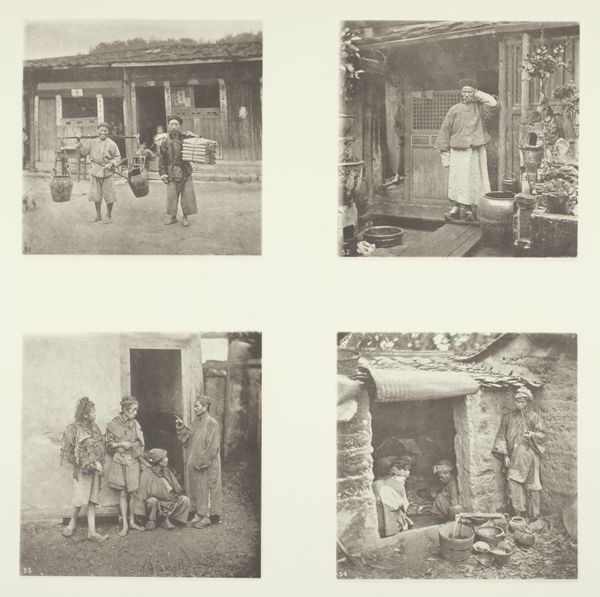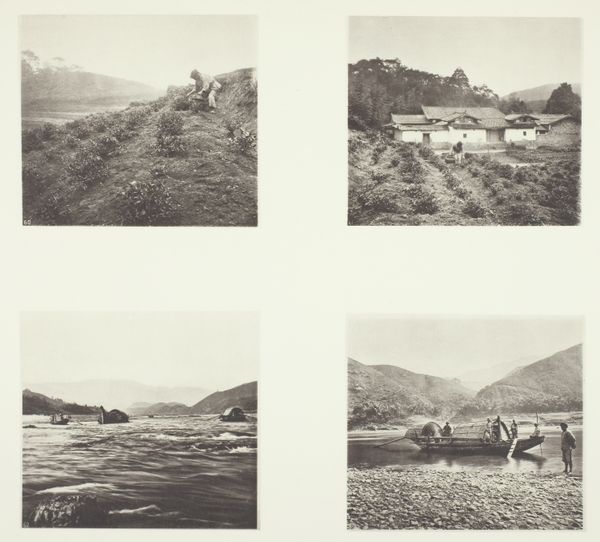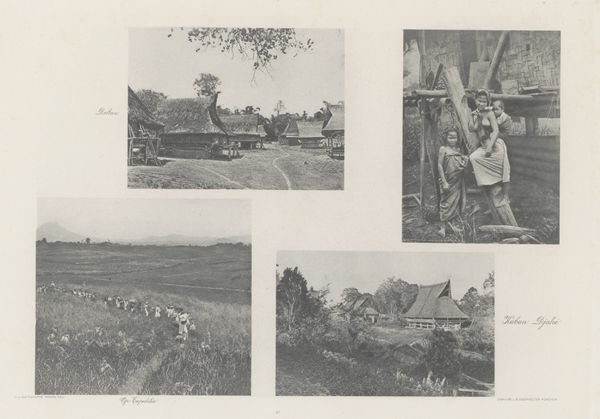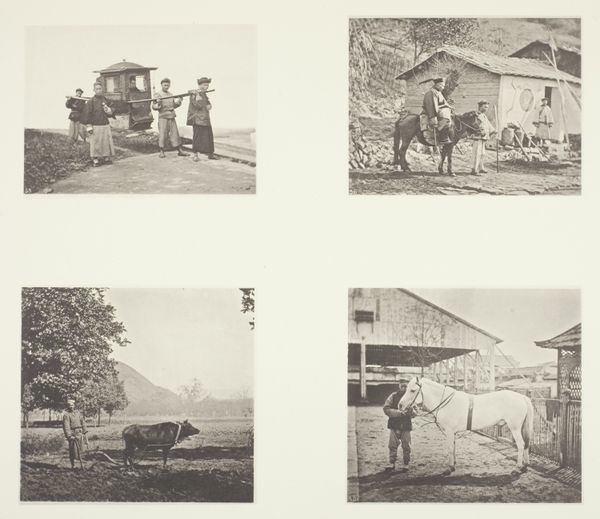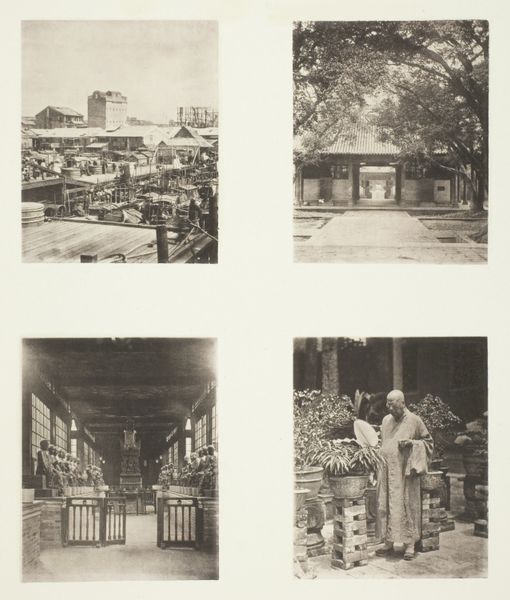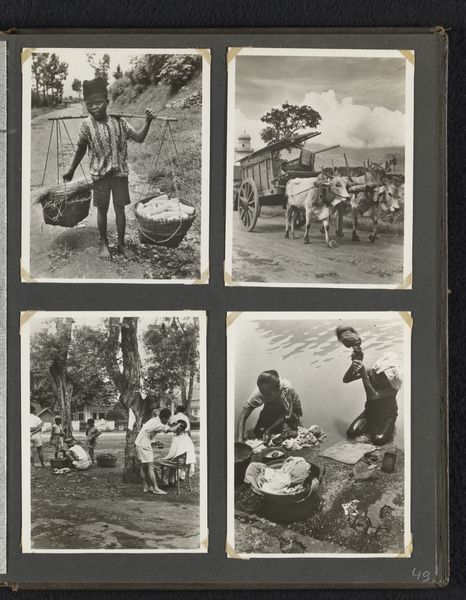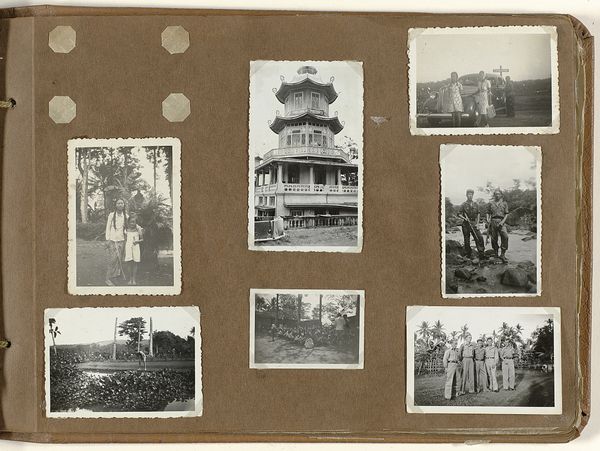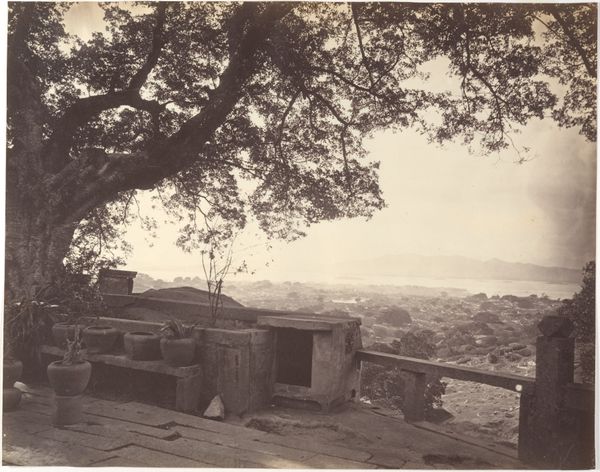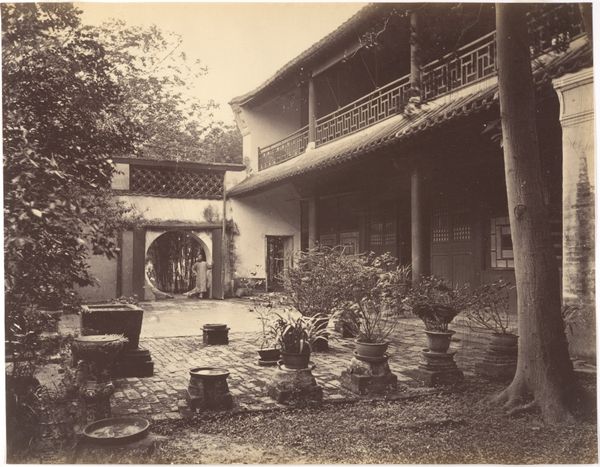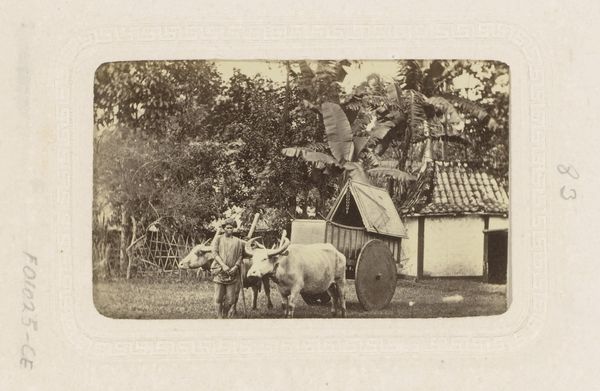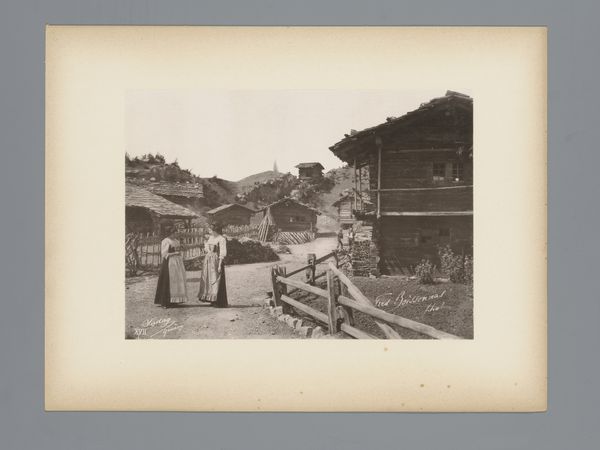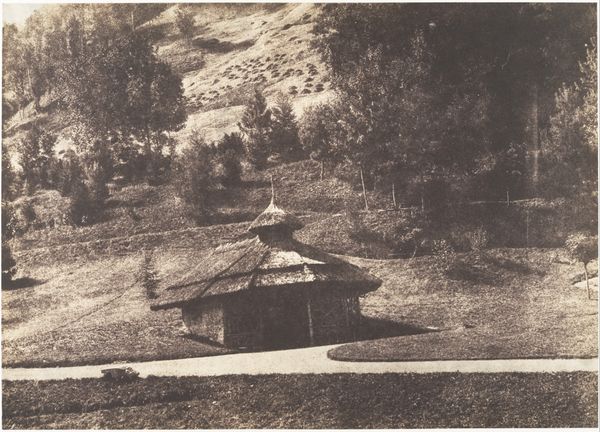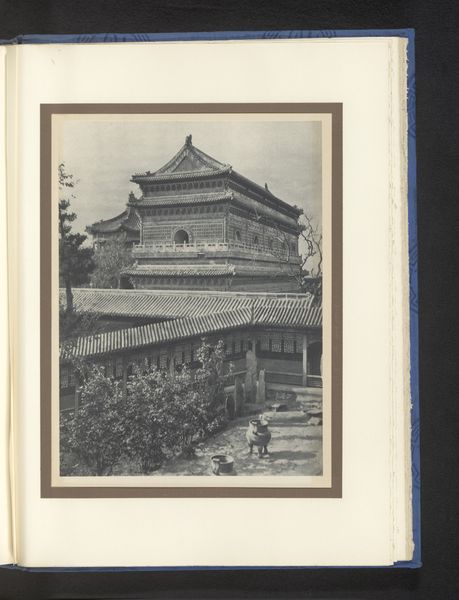
Part of Foochow Foreign Settlement; Terracing Hills; Foochow Field Women; A Memorial Arch c. 1868
0:00
0:00
photography, albumen-print
#
portrait
#
16_19th-century
#
asian-art
#
landscape
#
photography
#
orientalism
#
cityscape
#
history-painting
#
albumen-print
Dimensions: 11 × 12.3 cm (upper left image); 11 × 12.3 cm (upper right image); 11.6 × 12.3 cm (lower left image); 11.5 × 12.4 cm (lower right image); 34.5 × 47.2 cm (album page)
Copyright: Public Domain
Editor: This albumen print by John Thomson, around 1868, titled "Part of Foochow Foreign Settlement; Terracing Hills; Foochow Field Women; A Memorial Arch," gives us four distinct glimpses of life in China. It's fascinating how he’s composed these miniature narratives within one frame. How do you read these varied scenes through a historical lens? Curator: Thomson's work, like many Western photographers in Asia during that era, reflects the complex relationship between colonizer and colonized. These images, while seemingly objective, are carefully curated representations, intended for a Western audience. Consider the "Foreign Settlement," depicting an ordered, navigable cityscape; how does this contrast with, say, the image of women in the fields, seemingly outside this “modern” sphere? Editor: So, it's less a neutral depiction and more of a staged narrative for viewers back home? Curator: Precisely. The inclusion of the memorial arch also adds a layer. Is it presented as an intriguing antiquity or a symbol of a culture that must be documented and understood, possibly even dominated? The very act of photographing was a power dynamic. Editor: That's a stark, but very important perspective. I was focused on the composition, the light, and the almost romantic feeling I get from the landscapes… Curator: And that's understandable! But we must also question whose gaze shapes those aesthetic choices, and for what purpose. Were these images reinforcing existing power structures, or challenging them? It is up to us to reflect on our reading of the imagery and whose perspectives are amplified through this framing. Editor: I’ll definitely look at photography from that period differently from now on, keeping the cultural context in mind. Thanks for pointing that out!
Comments
No comments
Be the first to comment and join the conversation on the ultimate creative platform.
